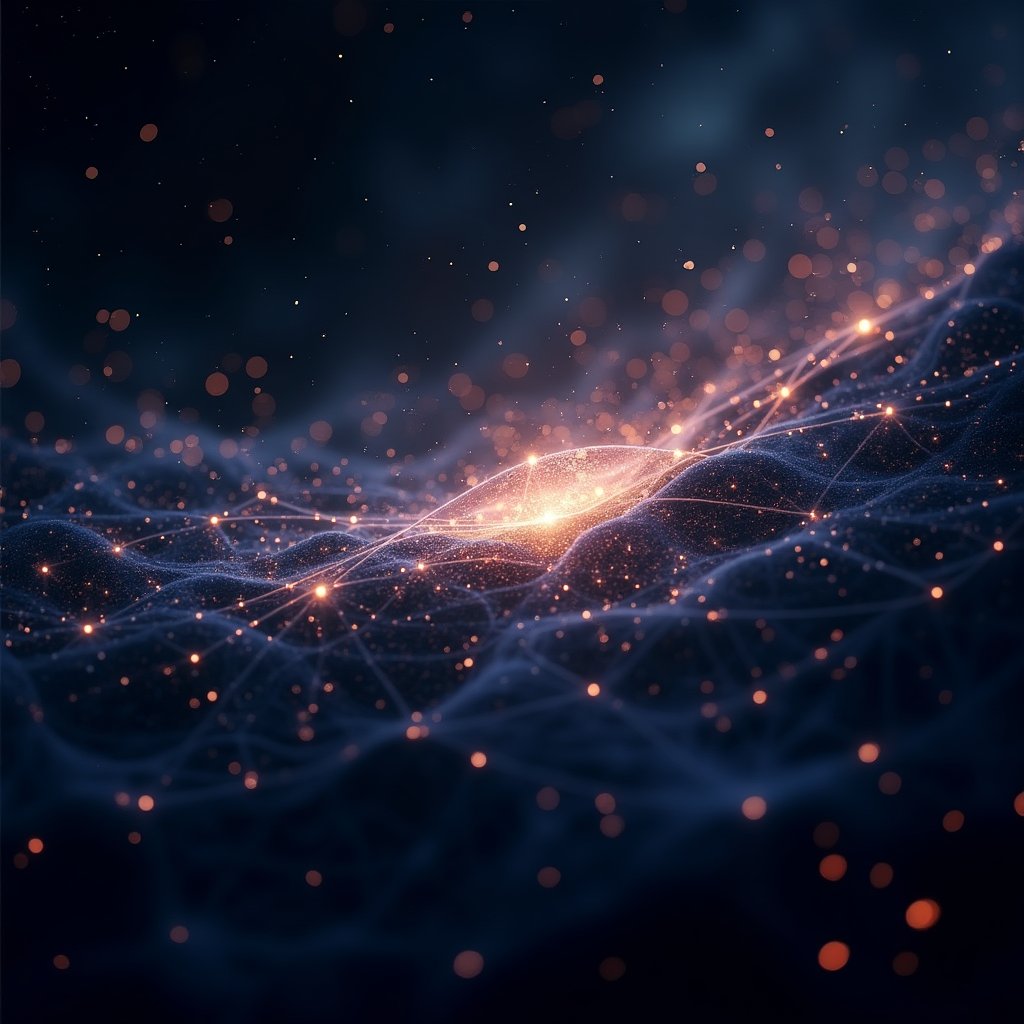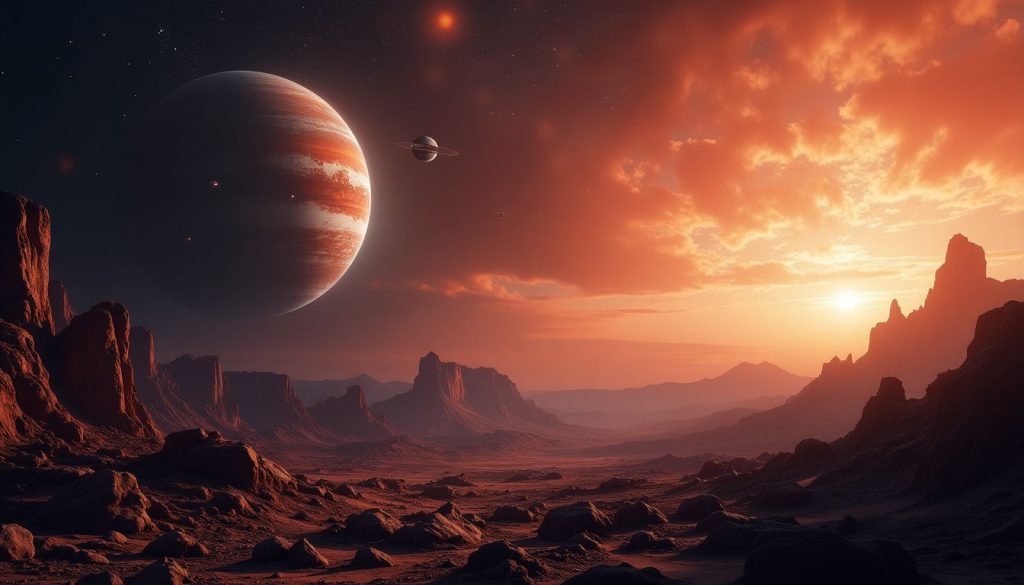In a universe so vast that even our most ambitious dreams struggle to reach its edges, there lies an almost poetic irony: the limitations of our ability to communicate across its immense expanse. Carl Sagan, ever the idealist, once mused about the possibility of billions of galaxies teeming with life. Yet the practical challenges of his vision remain—how do you shout across the cosmic void and hope someone (something?) shouts back? Neil deGrasse Tyson has similarly pondered about humanity's potential as an interstellar species, pointing out that our “cosmic toolkit” is woefully incomplete. Even Elon Musk, forever the futurist, has expressed concerns about the speed and efficacy of space communication as he dreams of civilizations on Mars sending postcards back to Earth. These brilliant minds, despite their differences, agree on one truth: interstellar communication is both a technical Everest and one of humanity’s most consequential challenges.
Right now, attempting to communicate with extraterrestrial intelligence or a future Martian base feels like juggling with one hand tied behind your back and a blindfold on. The vast and beautiful silence of the cosmos is a stark reminder that while smoke signals evolved into fiber optics, they're still metaphorically the same: slow, limited, and prone to distortion. Even our most powerful tools—like the radio telescopes of SETI or the immaculately engineered Voyager probes—are restricted by the speed of light. A simple “hello” aimed at our neighboring Alpha Centauri system, for instance, wouldn't receive a response for at least 8.6 years. Real-time interstellar communication? Completely out of the question with today’s technology.
But what if that question wasn’t as impossible as it seems? Enter Artificial Intelligence, a disruptive force that’s already reshaping every industry from healthcare to automotive. Combine AI’s boundless analytical capabilities with the scarcely understood phenomenon of quantum entanglement, and you might get what could be the backbone of a <>—a communication network that allows humans and extraterrestrial civilizations (should they exist) to connect in real-time. This isn’t utopian fan fiction; it’s a tantalizing possibility grounded in emerging scientific breakthroughs. Could these tools be the key to solving the insurmountable challenges of interstellar communication and upgrading our species from “Earth-bound” to “universal conversationalists?” That’s exactly what we’ll explore, diving into the daunting obstacles, extraordinary innovations, and ethical implications of building humanity’s ultimate communication system.
1. Distance and Time Lag in Space Communications
To grasp the Herculean task ahead, let’s start by confronting the sheer scale of the cosmos. Imagine an ant trying to scream at another ant on the opposite side of New York City—that’s what interstellar communication is like, multiplied by trillions. The universe operates on light-years as its ruler, and even the closest star system to Earth, Alpha Centauri, is located 4.367 light-years away. Here’s the problem: even traveling at the universe’s maximum speed (the speed of light), any message would need years to arrive, and that’s ignoring degradation or interference en route.
Consider our current space communication systems. NASA’s Voyager 1, launched in 1977 and now billions of miles away, transmits data back to Earth via radio waves. These signals take over 21 hours to reach us, despite the fact that Voyager is still within our solar system. Expand this model to interstellar distances, and you’re left with a frustratingly sluggish system that turns even a basic “Are you there?” into a generation-long waiting game. While inspiring, the unforgettable Golden Record sent aboard Voyager is little more than a well-crafted shout into a dark cosmic abyss.
1.1 The Limitations of Physics and Human Expectations
Science fiction, for all its imaginative brilliance, has misled us. Decades of movies and TV shows, from Star Trek to Star Wars, have popularized seamless, zippy interstellar communication with no delays, misunderstandings, or lag. It’s easy to assume that’s reality—but it’s not. Physics, specifically Einstein’s theory of relativity, is a stern gatekeeper. Nothing can travel faster than the speed of light, which isn't just an annoyance; it’s a hard boundary in our current science.
The mismatch between human expectations and universal laws creates a frustrating paradox. Back on Earth, we’ve mastered near-instant communication—fiber optics transmit photons across oceans in milliseconds. But apply this concept to interstellar distances, and even cutting-edge technologies fall short. You’d think a brilliant engineer at NASA or SpaceX could simply “boost the signal,” but no amount of amplification will bend the ironclad laws of physics.
1.2 Emerging Solutions: Why AI and Quantum Mechanics Stand Out
So, where do we go from frustration? Enter the dynamic duo of artificial intelligence and quantum mechanics, two fields striding into the 21st century with game-changing potential. While neither offers a straight-out-of-the-box solution, they bring much-needed hope to the desk.
Many quantum physicists, including Michel Aspelmeyer and Alice Larkin, have researched quantum entanglement, the baffling phenomenon Einstein famously dismissed as “spooky action at a distance.” Entangled particles seem to remain connected so deeply that actions performed on one particle instantaneously affect its partner, regardless of distance. If we could figure out how to harness this spooky action—well, hello real-time communication!
Still, there’s a glaring problem. Quantum entanglement, as we understand it today, can’t directly transmit data. Then comes AI, striding in like the hero of Act Three. With its extraordinary ability to process patterns, machine learning could work as an interpreter for quantum systems, decoding previously unusable quantum noise into clean, transmittable data streams.
The fusion of AI and quantum mechanics might not just be about incremental fixes—it could be about total transformation. In the hands of tools perhaps designed by visionaries at places like Microsoft Quantum Lab or DeepMind, this synergy holds the potential to finally extract gold from the intangible fog of quantum information.
2. Understanding Quantum Entanglement: The Potential for Real-Time Galactic Messaging
2.1 The Basics of Quantum Entanglement
Quantum entanglement might sound like something straight out of a science fiction novel, but it’s a very real, very strange phenomenon that Albert Einstein once famously called “spooky action at a distance.” Essentially, entanglement occurs when two particles become so deeply linked that a change in one particle instantaneously affects the other, regardless of how far apart they are.
Imagine having a pair of enchanted dice. No matter how far away you roll them—one die on Earth, the other on Mars—they always land on the same number. While it sounds fantastical, experiments conducted by scientists such as those at the Niels Bohr Institute and at research facilities like MIT have repeatedly confirmed the validity of quantum entanglement.
The phenomenon defies our intuitive understanding of the universe, but it holds promise for something even more remarkable: real-time communication that bypasses the speed of light. But there's a catch—you can't just use entanglement alone to send a message across the universe.
2.2 Why Quantum Entanglement Alone Isn’t Enough
Here’s the paradox of quantum entanglement: while two entangled particles are instantaneously connected, you can’t actually use that connection to directly transmit information. This limitation, known as the “no-communication theorem,” is a frustrating hurdle. Even if one particle on Earth and another near Alpha Centauri are entangled, simply observing or altering one particle doesn’t transmit usable data to the other.
The problem lies in the "wave function collapse," a phenomenon where the entangled state of particles breaks upon measurement. This effectively means you’d need a separate channel—like traditional signals traveling at the speed of light—to make sense of what’s happening between entangled particles.
So, while quantum entanglement teases us with the dream of instantaneous communication, logistical barriers make it more like a locked treasure chest without a key. That’s where artificial intelligence enters the story. It’s not just a key—it’s a lock-picker, problem-solver, and translator rolled into one.
2.3 Where AI Comes In: Making Sense of Quantum Data
Artificial intelligence has the potential to revolutionize how we use quantum entanglement for communication. Think of AI as the brain working behind the curtains, decoding and reconstructing the probabilistic "data noise" of quantum interactions. Researchers at corporations such as Google’s Quantum AI Lab are looking at how machine learning can predict and interpret patterns from dense, seemingly random data flows.
For interstellar communication, an AI system could theoretically identify hidden correlations in entangled particles, cracking today’s “impossible” challenges in quantum messaging. In one possible scenario, AI could reconstruct data packets sent via quantum mechanisms, even if traditional transfer methods introduce delays. This would give humanity a workaround, marrying AI's interpretative power with the instantaneous link quantum entanglement provides.
But we aren’t there yet. To tap into this capability, we’ll first need to teach AI how to make sense of quantum interactions on a scale no one has truly attempted. Could this be achieved in a few decades? Or will this take centuries to perfect? As we gaze at the stars and dream, the answers may lie at the intersection of silicon chips and entangled particles.
3. Artificial Intelligence as the Galactic Translator
3.1 The Role of AI in Decoding Unknown Patterns
AI shines brightest when faced with monumental challenges: sifting through oceans of data, spotting patterns humans can't see, and creating meaning from chaos. It’s why AI excels in fields like genome sequencing and weather prediction. Now imagine applying that same power to deciphering the mysterious, ethereal signals that may one day flow across the Galactic Internet.
At its core, artificial intelligence operates on machine learning algorithms—adaptive systems designed to improve through experience. For example, tools like NVIDIA’s machine learning platforms are constantly refining algorithms that can recognize increasingly complex data patterns. Similarly, AI might one day analyze quantum signals to detect intelligible messages that current systems would simply dismiss as background noise.
Picture an advanced neural net working tirelessly to decode signals that might originate from Proxima Centauri or even farther. What’s more, AI doesn’t just recognize patterns—it predicts them. With some tweaking, AI could eventually outpace even the most optimistic human efforts to unmask interstellar communications.
3.2 AI-Powered Signal Optimization for Distant Messages
Apart from deciphering signals, AI could actively improve how we send and receive information over interstellar distances. It’s a little like having a GPS for data streams: constantly rerouting and optimizing the best "pathways" for messages to travel through unfathomable cosmic distances.
Imagine building a network of satellites equipped with both quantum communication hardware and AI processing units. Such a system could autonomously analyze environmental challenges—like cosmic radiation, distant magnetic fields, or gravitational pulls—and dynamically adjust the “signal pathway” to ensure data integrity. Companies like SpaceX, which are already driving innovation in LEO (low-Earth orbit) telecommunication networks, provide a glimpse into how such systems could evolve.
On Earth, we already use AI to perfect terrestrial communication. A prime example is how platforms such as AWS and their machine learning algorithms help telecom operators optimize mobile and broadband data flows. Adapting these principles for interstellar uses could help mitigate the immense latencies and degradations inherent in space communication.
3.3 Challenges AI Faces in Galactic Communication
Of course, AI doesn’t have all the answers yet. Indeed, even the smartest AI systems in development today would crumble under the weight of the sheer unpredictability that comes with interstellar environments. Let’s consider some major hurdles:
- Information Degradation: A signal traveling across light-years will inevitably weaken, distort, or encounter interference (think of it like an old VHS tape degrading over time). AI would need to work overtime to reconstruct accurate data from essentially broken code.
- Unknown Physics: Space is still full of mysteries. From black hole interference to the true behavior of dark matter, the conditions out there might present variables AI simply wasn’t trained to handle.
- Bias and Error: AI, though intelligent, is not infallible. Algorithms could misinterpret quantum data or even draw false positives/negatives when trying to detect meaningful messages.
Much like the early days of computerized weather forecasting, there’s a learning curve ahead for AI in interstellar communication. Yet, despite these obstacles, there’s one undeniable truth: With every passing year, AI gets better. Every obstacle it overcomes today only strengthens it for tomorrow. That’s why it might just be humanity’s best galactic translator in the long run.
4. Building the Galactic Internet: Infrastructure for Cosmic Networks
4.1 Foundational Technologies for the Galactic Internet
Picture a web made of light, stretching across the galaxy, connecting distant star systems like nodes in Earth's internet. If the Galactic Internet becomes a reality, it will require unprecedented innovations in hardware and physics. At its core, the Galactic Internet would rely on revolutionary technologies designed specifically for the unique demands of interstellar communication.
Let’s break down the main components of the infrastructure:
| Technology | Description | Key Function |
|---|---|---|
| Quantum Repeaters | Devices that extend quantum communication by enabling widespread entanglement distribution. | Maintains entanglement over light-years. |
| Quantum Satellites | Orbiting communication hubs capable of generating and transmitting entangled particles. | Facilitates Earth-to-space quantum entanglement. |
| Entanglement Distribution Networks | A lattice-like system of nodes transmitting quantum data across the cosmos. | Enables instantaneous connectivity across distances. |
While Earth’s internet relies on fiber optics, undersea cables, and data centers, the Galactic Internet would replace these with quantum-based tools. For example, China’s groundbreaking Micius satellite project laid the groundwork for quantum communication by transmitting entangled particles from space to Earth. Now imagine scaling that effort, not just globally, but across the vast chasms of the universe.
4.2 AI’s Role in Managing the Network
If the Galactic Internet is the body, Artificial Intelligence would serve as its central nervous system. Maintaining instantaneous links across light-years won’t just require cutting-edge hardware—it’ll demand unprecedented levels of coordination and optimization. AI will be pivotal in managing these tasks, often in ways human operators simply cannot.
Here’s what AI could do for the Galactic Internet:
- Signal Optimization: AI systems can analyze enormous amounts of quantum entanglement data to detect minute disruptions in the communication link and correct them instantly.
- Network Self-Healing: AI algorithms could autonomously repair quantum entanglement breaks caused by cosmic phenomena like solar storms.
- Predictive Maintenance: By learning patterns, predictive AI could prevent network outages by foreseeing potential failures long before they happen.
Organizations like SpaceX and Blue Origin, which are pushing the boundaries of satellite-based communication, may soon integrate AI into their systems. The logical next step for humanity’s communication revolution is to set these AI-driven tools loose on the Galactic stage, ensuring seamless operation of networks stretching beyond our solar system.
4.3 Predicting the Future of Cosmic Communication Networks
What would a fully functioning Galactic Internet mean for humanity? Let’s envision:
- Scientific Collaboration Across Space: Colonies on Mars, Europa, or beyond could collaborate in real-time, sharing research and innovation seamlessly with Earth-based scientists.
- Interstellar Diplomacy: A stable communication network could enable peaceful relationships with extraterrestrial civilizations—if and when we find them.
- Deep Space Missions: Astronauts venturing into uncharted territory would remain connected to mission control, ensuring safety and efficiency.
- Cultural Exchange: Last but not least, the Galactic Internet could usher in an unprecedented age of interplanetary culture, where tales, art, and ideas transcend planetary origins.
With the pieces slowly falling into place, the vision of a connected galaxy no longer feels like a pipe dream but an eventual, inevitable step in humanity’s journey to the stars.
5. Ethical and Philosophical Implications of AI in Space Communication
5.1 Who Controls the Galactic Internet?
Here’s a sobering thought: what happens when humanity builds the Galactic Internet? If history has taught us anything, it’s that power structures consolidate rapidly around new technology. The internet we know today started out as a tool for open collaboration but is now dominated by tech giants like Google, Meta (Facebook), and Amazon. Could the same fate befall the Galactic Internet?
Potential scenarios include:
- Governmental Control: National governments might vie to control access to the network, leading to modern-day space-age arms races.
- Corporate Monopolies: Private entities such as corporations could prioritize profit over equity, granting access only to the wealthy few.
- Shared Global Ownership: A consortium of nations might manage the technology collaboratively, similar to how the International Space Station operates.
Whichever way control is established, the ethical stakes remain high. If monopolized, the Galactic Internet could become a tool of suppression rather than liberation, echoing the grip some authoritarian regimes already have on Earth-bound internet use.
5.2 The Larger Implications of Communicating with Extraterrestrial Civilizations
Expanding the Galactic Internet is bound to amplify our chances of encountering intelligent life. But are we ready for what—or who—might answer?
This ties back to the complex enigma of the Fermi Paradox. If other civilizations are out there, the implications of communicating with them would be staggering. AI could step in as a translator, parsing unknown languages and cultural norms. But this possibility also raises troubling philosophical questions:
- Are we mature enough as a species to engage in interstellar dialogue responsibly?
- Could our efforts to make “first contact” unintentionally alert hostile extraterrestrial civilizations?
- Should AI act as an intermediary—or will that give it too much influence over humanity’s interstellar relationships?
The answers to these questions must emerge before ambitious communication systems are set in motion.
5.3 AI as a Bridge for Cultural Understanding
Finally, let’s consider the hopeful side of this cosmic leap. AI, with its unparalleled capacity for learning and adaptation, could become humanity’s ultimate diplomat. Think of it as a universal translator, processing alien languages, customs, and even moral frameworks. AI might propose shared protocols that could lay the foundation for interstellar cooperation.
One historic analogy is the Rosetta Stone, which became the key to deciphering ancient Egyptian hieroglyphs. In the same way, AI could serve as a digital Rosetta Stone for extraterrestrial languages, knitting together the disparate threads of galactic civilizations into a unified tapestry.
Yet there’s a poetic irony here. As we look outward to connect with the stars, AI might force us to confront uncomfortable questions about ourselves. Would aliens see us as a united species—or as fragmented nations, tethered to old rivalries and hierarchies? Perhaps the greatest legacy of the Galactic Internet won’t be interstellar communication, but a mirror reflecting our own capability for unity.
6. What Lies Ahead: AI and the Next Era of Communication
6.1 The Roadblocks That Must Be Overcome
If building an interplanetary email sounds challenging, imagine scaling that to light-years. Humanity's dream of interstellar communication faces steep hurdles, beginning with the elusive physics of quantum mechanics. Quantum information losses, often described as “noise,” pose a big issue. Picture trying to whisper a secret across a crowded stadium while keeping every word crystal clear—that's quantum data transfer in a nutshell. Scientists at institutions like Caltech and MIT have been running experiments to combat data degradation, but so far, scalable solutions remain out of reach.
AI is not exempt from its own challenges. Biases, energy consumption, and computational limits are already hot topics here on Earth. For something as sensitive as interstellar communication, even slight data discrepancies could trigger massive misunderstandings. Take this thought experiment: How would an AI handle decoding clashing cultural nuances in alien messages? What humans consider harmless could come across as hostile in an interstellar context.
This leads to the next constraint: funding. Lofty concepts like the Galactic Internet may sound captivating, but they demand both astronomical budgets and unparalleled global cooperation. With space agencies like NASA, ESA, and emerging private players such as SpaceX devoting significant resources to lunar habitats and Mars colonization, it’s hard to imagine interstellar communication getting higher billing on their to-do lists anytime soon.
6.2 The Vision: Humanity as an Interstellar Communicator
Despite the roadblocks, the potential rewards are breathtaking. Imagine a thriving Galactic Internet connecting far-flung human colonies on Mars, Europa, and beyond. Picture sharing real-time visual feeds of icy methane lakes on Titan or receiving cosmic weather reports from Alpha Centauri. Such a system would not just make practical tasks more manageable but would allow humanity to dream together in ways never before possible.
Looking beyond utility, the ability to communicate across light-years would elevate the human experience itself. This technology could foster planetary unity—after all, when our messages are whizzing to Proxima Centauri at breakneck speeds, our divisions here on Earth might begin to seem truly trivial. Picture it as humanity’s daily reminder that we’re all crewmates on one tiny spaceship called Earth.
The collaboration between AI and quantum science creates a profound narrative: that of a species not content to conquer physical realms alone, but to build bridges of understanding across the void. The first time we receive an intelligible signal from an alien civilization—or successfully transmit one—will be a landmark as transformative as discovering fire.
Is such a future distant? Maybe. But every advancement, from the printing press to fiber optics, started as an impossibility before its time came. With AI and quantum technologies advancing at breakneck speeds, perhaps humanity won’t have to wait centuries to unlock this ultimate connection. Our cosmic neighbors might already be waiting, with outstretched antennas, dreaming of the day we finally find each other.
Bridging the Stars: Humanity’s Next Giant Leap
Our ability to communicate defines who we are, from ancient cave paintings to digital tweets. But as humanity eyes the stars, we find our current tools woefully inadequate for the task of preserving our voices across light-years. Enter artificial intelligence and quantum entanglement, two revolutionary forces that could shatter the cosmic silence.
Harnessing AI as a decoder and quantum networks as a delivery system represents more than just a technological leap; it’s a philosophical one. It raises questions about control, access, and intent. Who holds the key to the Galactic Internet? What happens when—or if—an alien species answers back? And more importantly, do we use this newfound cosmic power to unite humanity or exacerbate its divides?
The road ahead is littered with challenges, from the glaring limitations of current science to the ethical dilemmas hiding within AI’s algorithms. But the vision is clear: a connected galaxy where human colonies, alien civilizations, and robots built for interstellar repair chatter away in a cosmic neighborhood where silence once reigned.
As a species, we stand at the precipice of two eternal truths: the heavens are vast, unreachable by human touch—but not, perhaps, by human thought. With each step forward in AI and quantum science, we may inch closer to making the stars less lonely. And as we prepare for that potential breakthrough, one question lingers. When we finally bridge the infinite—when our voices echo across the ether—who and what will we become?
Now it's over to you. What excites you or worries you most about building the Galactic Internet? Share your thoughts in the comments below. And don’t forget to join our newsletter to stay updated on humanity’s journey to becoming an interstellar communicator—you might just earn a coveted spot in iNthacity, the "Shining City on the Web." Let’s spark the conversation and dream together.
Frequently Asked Questions: AI and the Future of Interstellar Communication
1. What is interstellar communication, and why is it so difficult?
Interstellar communication refers to the exchange of information across the unfathomable distances of space between celestial bodies, planets, or even solar systems. The challenge lies in the sheer distances involved—measured in light-years. For example, Alpha Centauri, our closest star system, is over 4.3 light-years away, which means even a message traveling at the speed of light would take over four years to get there!
Add to this the inherent degradation of signals across such vast distances and the strict speed limit imposed by physics (i.e., nothing can travel faster than light), and it becomes clear why near-instant communication, as seen in science fiction like Star Trek or Star Wars, is currently impossible.
2. How does quantum entanglement work for communication?
Quantum entanglement is one of physics’ most fascinating phenomena. In simplest terms, it occurs when two particles become so deeply interconnected that any change to one instantly affects the other, no matter how far apart they are. Albert Einstein famously referred to it as “spooky action at a distance.”
Theoretically, this could pave the way for instantaneous communication across vast distances, but there’s a catch: you cannot directly transmit usable information using entanglement alone. This is due to the constraints imposed by the no-communication theorem, which states entanglement can't be used to send messages faster than light. Scientists are currently exploring ways to combine entanglement with other technologies to bypass these limitations.
3. Why is AI critical for interstellar communication?
Artificial intelligence is a game-changer in interstellar communication due to its unmatched ability to process, decode, and interpret vast and complex datasets. Consider how AI systems like ChatGPT or DeepMind revolutionized language modeling and pattern recognition on Earth.
In the context of space communication, AI could help decode quantum signals or predict patterns from faint, noisy interstellar transmissions. It is particularly useful when dealing with unpredictable or previously unseen data environments, such as those we might encounter in alien star systems.
- AI can optimize weak signal transmissions over long distances.
- It ensures critical data integrity, minimizing errors caused by the harsh conditions of space.
- AI algorithms can even self-learn and adapt, which reduces reliance on human input—a crucial advantage for space applications.
4. Is real-time communication across galaxies really possible?
Real-time communication across galaxies is still speculative. Current limitations in quantum mechanics and engineering make it unachievable. Even so, advances in quantum entanglement and AI suggest a future where it could become feasible.
Consider this: Just a century ago, wireless radio technology seemed like magic. Today, we carry smartphones that instantly transmit data worldwide. Similarly, organizations like NASA and companies like SpaceX are pushing the boundaries of what's possible in space exploration. Real-time interstellar communication might seem like science fiction today, but it could become our reality within a few generations.
5. What are the risks of a Galactic Internet?
A Galactic Internet sounds like the ultimate technological achievement. However, like every great innovation, it comes with its share of risks. Key concerns include:
- Monopolization: If private corporations or a single nation were to control the Galactic Internet, it could lead to inequality in access. Imagine a “space-age oligopoly” controlled by tech giants like Google or Microsoft.
- Weaponization: There’s always the risk of advanced communication technologies being used for military purposes, sparking a new kind of arms race in space.
- Alien Contact Risks: While reaching extraterrestrial civilizations might sound exciting, it raises existential questions. Are we prepared for the possibility of alien responses? Stephen Hawking, the renowned physicist, warned that contacting advanced alien species could be as risky as Native Americans encountering Columbus.
6. How could AI help us communicate with extraterrestrial civilizations?
Contacting intelligent life beyond Earth would be one of humanity’s most profound moments. However, one major challenge is the potential language barrier. Enter AI. Machine learning and natural language processing can help us:
| AI Capability | Application for Alien Communication |
|---|---|
| Pattern Recognition | AI could analyze extraterrestrial signals (e.g., radio waves, light pulses) to identify patterns or intentional structures. |
| Decoding Unknown Languages | Using algorithms similar to ones used for deciphering ancient texts or Google Translate, AI could reverse-engineer alien lexicons. |
| Developing Communication Protocols | AI could propose universal structure-to-convey intent, akin to mathematics serving as a universal language. |
7. When will quantum and AI-powered communication become reality?
Developing a fully functioning quantum- and AI-powered communication network is still in its infancy. It depends on breakthroughs in multiple fields, including quantum computing, artificial intelligence, and space engineering. Initiatives by institutions like CERN, space agencies such as ESA, and private companies like IBM are pushing the envelope.
In practical terms, viable quantum communication systems might be decades away, with realistic milestones achieved by the middle or latter half of the 21st century. While frustratingly slow for the impatient, this timeline embodies the difficult yet exhilarating process of scientific innovation.
Wait! There's more...check out our gripping short story that continues the journey: We’re Listening
Disclaimer: This article may contain affiliate links. If you click on these links and make a purchase, we may receive a commission at no additional cost to you. Our recommendations and reviews are always independent and objective, aiming to provide you with the best information and resources.
Get Exclusive Stories, Photos, Art & Offers - Subscribe Today!



























1 comment